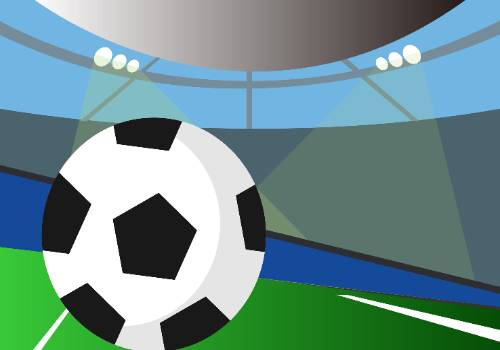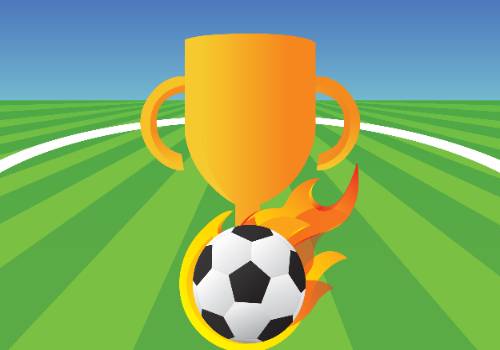滑動查看中文
In Chapter 2 of Purposeful Play, teachers explored how to balance different types of play at school. Different kinds of play offer opportunities for students to engage, develop skills, and personalize their learning.
 (資料圖片)
(資料圖片)
| /
★
Our Early Years educators worked in expert groups to explore 4 different kinds of play and share how they may look in our Early Years classrooms:
Types of Play
1
Fantasy/Imaginative Play
During this type of play, students use their imaginations to engage with materials, their environment, and their classmates.
Here are some examples of fantasy and imaginative play in EY at ISNS:
K3
Students take on the role of a character from a story they have been listening to. They are moving around like a snake with a long tongue.
K4
Students are using their imaginations to search the school campus for ‘clouds’. They are gathering their imaginary clouds in a basket that they will later use to make their cloud bread.
K5
Students uses their imagination to develop their numeracy skills while running their own pizza restaurant.
2
Constructive Play
During this type of play, students use materials to create a product or accomplish a goal.
Here are some examples of constructive play in EY at ISNS:
K3
Students work together to construct a system where the ball goes down the slide and is collected by the moving Ferris wheel, which starts the cycle all over again.
K4
Students use their imagination to consider what else a box could be. For K4 , these boxes were the parts of a robot!
K5
During UOI center time, K5 students worked together to construct their own car park.
3
Games with Rules
During this type of play, students learn to follow rules and strengthen their self-regulation.
Here are some examples of games with rules in EY at ISNS:
K3
In the photo under Rough and Tumble Play, K3 students are seen playing 老鷹抓小雞. During this time, students are learning how to follow rules, manage their emotions and play together.
K4
Students explore rules to new games and learn how to take turns while playing Duck, Duck, Goose.
K5
Students learn about phonics while playing a game with their classmates.
4
Rough and Tumble Play
During this type of play, students engage in riskier physical behaviors that are necessary for physical, social, and cognitive development.
Special note:
We acknowledge that you might be concerned with the idea of rough and tumble play at school. Your child’s safety is our number one concern but we want to share that this type of play is critical to child development. As educators we acknowledge the importance of students engaging in this type of play, but we also abide by the rules and expectations at ISNS to ensure students safety. Students can engage in this type of play at school within reason. Some aspects of this play are not appropriate in a school setting, but we encourage families to recognize the importance of this play at home as well. If you have any questions about this form of play, please feel free to contact your child’s teacher, Mrs. Dorsey, or Mr. Tucker.
Here are some examples of rough and tumble play in EY at ISNS:
K3
Both K3 classes play 老鷹抓小雞 on the roof as part of our weekly group game time. During this time, they learn how to follow rules to new games and explore how to use their bodies in safe and caring ways.
K5
K5 students are using and developing their gross motor skills while being risk-takers in reaching new heights in play!
Documenting Play
●
While students engage in different types of play, teachers and teaching assistants are continuously interacting with students and documenting their play.
Documentation can look like:
Taking pictures and videos to record play moments. Teachers can play the video with the students to reflect on their play and share the moments to inspire others" play. Teachers will also watch the videos to capture the conversation the students had to analyze and use it for planning or expanding their environment for play.
Writing notes about students’ behaviours, conversations and questions to inform future teaching and learning.
Checklists to see when and how students are developing and mastering skills.
What do our teams want you to
know from this chapter?
K3
“To develop into the fullest versions of ourselves, we need outlets for fantasy and physicality, construction and cooperation, and time to grow.” (26)
There are many kinds of play: fantasy/imagination; constructive; games with rules; and rough-and-tumble. Each offer children opportunities to develop their minds and bodies. They help children understand how to play together in a group, how to sense their friends’ feelings, how to control their bodies, and more.
Provide opportunities for your child to engage with others their age and let them learn how to problem solve. Let them learn how to fall down and get back up; how to identify different feelings and express them in an appropriate way; develop persistence and work through setbacks.
K4
Play helps children be better children. We often worry too much about what the children need next and not what they need now. We learned all the important life skills through play. As we did, our little humans are learning all the important life skills from PLAY.
K5
There are many kinds of play, and each kind is important and teaches life-long skills. For example, children learn communications skills, problem-solving skills regulation, as well as physical development, social and cognitive development.
Slide to English
在《目的性游戲》第二章中,教師們探討了如何平衡學校不同類型的游戲。不同類型的游戲為學生提供了參與、發展技能和個性化學習的機會。
| /
★
我們的幼兒教育工作者在專家小組中探索了4種不同的游戲,并分享了它們在我們的幼兒課堂上的樣子:
游戲的種類
1
幻想/充滿想象力的游戲
在這類游戲中,學生們通過他們的想象力去接觸材料、周圍環境和同學。
以下是ISNS關于幼兒的一些幻想和想象游戲的例子:
K3
學生扮演他們一直在聽的故事中的人物。他們像一條有著長舌的蛇一樣四處走動。
K4
學生們正在發揮他們的想象力在校園里尋找“云”。他們正在把想象中的云收集在籃子里,然后用收集來的“云”做云面包。
K5
在經營自己的披薩餐廳的同時,利用他們的想象力發展他們的數數技能。
2
結構游戲
在這類游戲中,學生們使用材料來創造一個產品或實現一個目標。
以下是ISNS幼兒園關于結構游戲教學的一些例子:
K3
學生一起構建了一個系統,在這個系統中,球從滑梯上滑下來,然后被移動的摩天輪收集起來,重新開始循環。
K4
學生運用他們的想象力來思考盒子還可以是什么。對于K4班級來說,這些盒子是機器人的部件!
K5
在探索單元學習區時間里,K5同學一起建造了自己的停車場。
3
游戲及其相關規則
在這類游戲中,學生要學會遵守規則,加強自我調節。
以下是ISNS關于幼兒園游戲和一些相關規則的例子:
K3
在“吵鬧式游戲”下面的照片中,K3的學生正在玩老鷹抓小雞。在這段時間里,學生們學習如何遵守規則,管理自己的情緒,一起玩耍。
K4
學生探索新游戲規則,學習如何輪流玩鴨子、鴨子、鵝。
K5
學生在與同學玩游戲時學習拼讀。
4
吵鬧式游戲
在這類游戲中,學生參與到風險較大的身體、社交和認知發展所必需的行為中。
特別提示
我們知道你可能會關心學校里的吵鬧式游戲。孩子的安全是我們最關心的問題,不過我們想要分享的是,這類游戲對孩子的發展至關重要。作為教育工作者,我們承認學生參與這類游戲的重要性,但我們也遵守ISNS的規則和期望,以確保學生的安全。在合理的情況下,學生可以在學校參與這類游戲。這個游戲的某些方面不適合在學校的環境中,不過我們鼓勵家長們認識到這個游戲在家里的重要性。如果您對這種游戲形式有任何疑問,請隨時聯系您孩子的老師Mrs. Dorsey或Mr. Tucker。
以下是幼兒園在ISNS的一些吵鬧式游戲的例子:
K3
兩個K3班級都在屋頂玩老鷹抓小雞,這是我們每周小組游戲時間的一部分。在這段時間里,他們學習如何遵守新游戲的規則,并探索如何以安全和關愛的方式使用他們的身體。
K5
K5的學生在發揮和發展他們的肌肉運動技能的同時,也在游戲中達到新的高度!
游戲記錄
●
當學生參與不同類型的游戲時,教師和助教會不斷地與學生互動,并記錄他們的游戲。
記錄是這樣的:
拍攝照片和視頻記錄游戲時刻。教師可以與學生一起播放視頻,反思他們的游戲,并分享這些時刻,以激勵其他人一起玩。教師還將觀看視頻捕捉學生們的對話,并對其進行分析和將其用于計劃后面的課程或拓展他們的游戲環境。
記錄學生的行為、對話和問題,為今后的教學提供信息。
查看學生何時以及如何發展和掌握技能的清單。
我們的團隊希望您從這一章中
了解什么?
K3
“為了發展成最完整的自己,我們需要釋放幻想和身體、積極建設和合作,以及讓成長的時間有意義。”(26)
游戲有很多種:幻想/想象的、結構的、有規則的和吵鬧的游戲。它們都為孩子提供了發展心智和身體的機會。他們幫助孩子們理解如何在一個群體中一起玩耍,如何感知朋友的感受,如何控制自己的身體等等。
為您的孩子提供與同齡人接觸的機會,讓他們學會如何解決問題。讓他們學會如何跌倒然后爬起來;如何識別不同的感受,并以適當的方式表達;培養毅力,克服挫折。
K4
游戲幫助孩子成為更好的孩子。我們常常過于擔心孩子們接下來需要什么,而不是他們現在需要什么。我們在玩耍中學會了所有重要的生活技能。正如我們所做的那樣,我們的小朋友正在從游戲中學習所有重要的生活技能。
K5
游戲有很多種,每一種都很重要,都是能傳授終生的技能。例如,孩子學習溝通技巧,解決問題的技巧,以及身體發育,社交和認知發展。
關鍵詞:



















 營業執照公示信息
營業執照公示信息